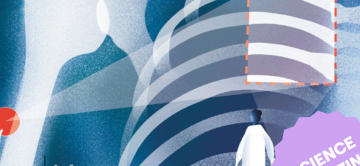Pierre Dubois, professor of economics at TSE, is an expert in industrial organization applied to health and pharmaceutical economics. He gives us an insight here on recent and upcoming developments in this fast-moving field particularly subject to market shifts, government intervention, asymmetric information, uncertainty and barriers to entry.
What are the major challenges for innovation in the pharmaceutical industry today?
Growth and innovation in the pharmaceutical industry have traditionally been driven by “blockbuster” drugs, that’s to say the commercialisation of a wide-reaching drugs which achieve global acceptance by prescribing doctors, dominating the market and leading to billion dollar profits for the owner of the blockbuster patent. Examples include the well-known Tagamet (trade name of the Cimetidine molecule) for stomach ulcers and Lipitor (trade name of Atorvastatine) for cholesterol.
In today’s market, pharmaceutical companies struggle to find new molecules to patent such blockbusters. Quite simply, the low-hanging fruits have already been picked! This is leading to growing costs linked to innovation, forcing the companies to find new ways to innovate.
Your work suggests that innovation today depends on market sizes?
As recent research I carried out with colleagues has shown, there is a clear link between shifting market structure and new models for innovation in the pharmaceutical industry. As a general rule, larger markets attract investment, leading to high levels of innovation. Cancer treatment is obviously a major focus today, but for this illness a global “blockbuster”-style approach cannot work; each cancer has its own profile, and each patient their own pathology. Drug-based solutions hence need to be tailor-made for a number of fragmented, much smaller markets. This means creating a whole new innovation model for the industry at a much higher cost. It is impossible to continue the classic “demand-pull” model. Today, a possible shift is towards a more “supply-push” model, applied for example to developing country priorities such as aids, tuberculosis and malaria. That said, this model brings its own problems of regulation too.
What are the effects of regulatory constraints on international competition in the pharmaceutical industry?
In most countries outside the United States, the government plays an important role in determining the price of new pharmaceutical treatments and in promoting access to such treatments. Cross-country variability in regulatory frameworks can lead to international frictions. France, for example, has heavy regulation and sets prices low, leading to slow market entry for new drugs. The US would criticise these low prices and the delayed market entry process as a form of « free-riding » on financing and rewarding advanced innovation. Whether this is true or not it is certainly a source of debate!
You have studied the effect of generic drugs in France. Tell us more.
France has historically suffered from high pharmaceutical expenses, in part due to the consumption of branded drugs instead of generic equivalents, considered as inferior and even unsafe substitutes. Such behaviour was encouraged by France’s nation-wide welfare system which reimburses almost the full cost of prescription drugs to patients. Today, in order to save costs, French regulators encourage the launch of generics as soon as the originator patents have expired, and a widespread campaign has been led to encourage both pharmacists and patients to accept and use generics. However, reforms like the reference pricing reform introduced in 2004 which set reimbursement prices for branded drugs at the generic price level after introduction has not fully achieved its goal when one takes into account the companies’ reactions to reduced branded prices. In 10 years, France has increased its generic market share from 33% to 55%, which is still a long way behind Germany (from 60% to 78%) and the USA (from 85% to 90%).
What would you say are the major challenges of the pharmaceutical industry for the future?
The challenge is for society and regulation. Companies react as best as they can to policies and market forces. The best regulation policies are difficult to design in a world where we want to improve health care and foster innovation efficiently in a globalized world. This is a fascinating research area for economists. Take the example of antibiotics; we encourage innovation in order to be able to treat potential forthcoming epidemics but at the same time want to minimize their overuse once they are on-shelf in order to reduce expenses and antimicrobial resistance that render them inefficient to future pandemia. Finding the right balance is indeed a challenge.




